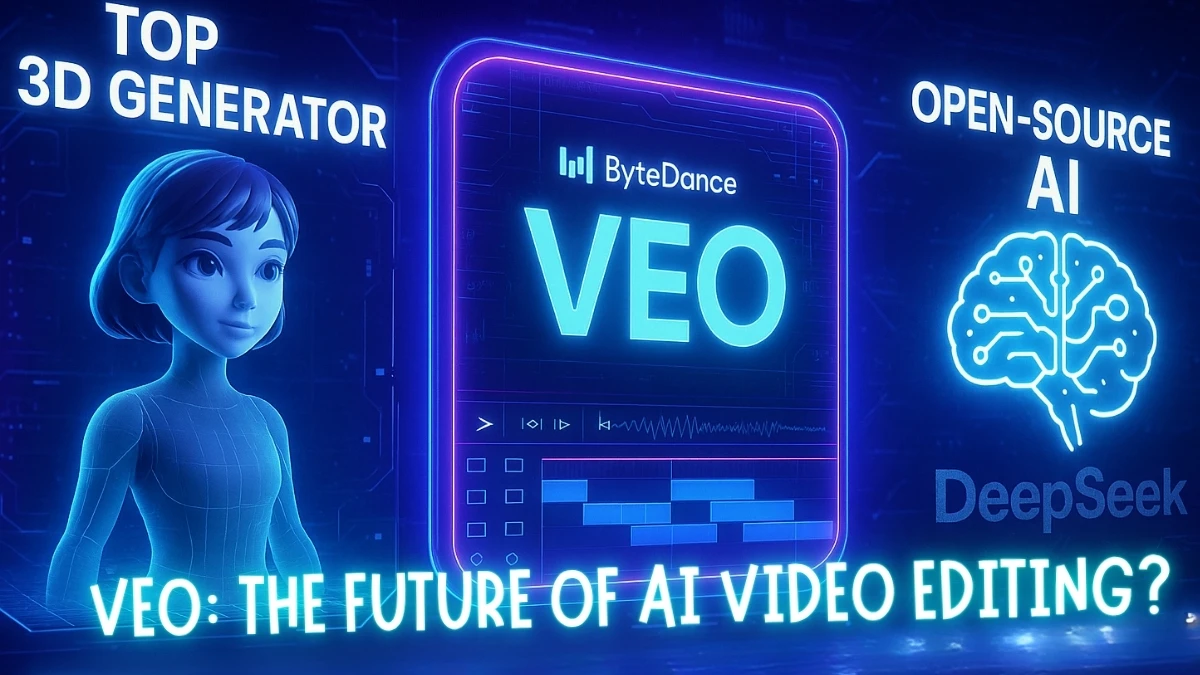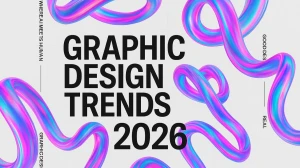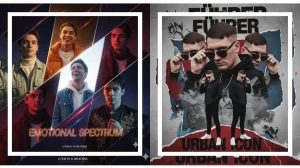ByteDance's Video Generation Revolution: Seedance and OmniHuman Lead the Charge
ByteDance has quietly emerged as a formidable force in AI video generation, launching not one but multiple groundbreaking models that are outperforming industry giants. The company's strategic approach combines cutting-edge research with practical applications, positioning it as a serious challenger to established players like Google and OpenAI.
Seedance 1.0: The Silent Benchmark Crusher
While the tech world celebrated Google's Veo 3 launch with fanfare, ByteDance quietly released something that might be even better.
TikTok's parent company recently published the research paper for Seedance 1.0, a bilingual video generation model that now tops independent leaderboards for both text-to-video and image-to-video generation.
According to benchmark results, Seedance 1.0 ranks first in both text-to-video and image-to-video tasks, outperforming Google's Veo 3, OpenAI's Sora, and Kuaishou's Kling 2.0 in prompt accuracy, motion quality, and image sharpness.
What makes this achievement particularly impressive is how ByteDance achieved these results without the marketing blitz typically associated with major AI releases.
The technical prowess behind Seedance 1.0 is remarkable. Generating five seconds of Full HD video takes about 41 seconds, which ByteDance says is significantly faster than comparable models.
The model excels at creating complex, multi-scene videos with consistent characters and sophisticated camera movements, addressing one of the most challenging aspects of AI video generation.
OmniHuman: Bringing Photos to Life
Parallel to Seedance's development, ByteDance researchers unveiled OmniHuman, an AI system that transforms single photographs into realistic videos of people speaking, singing and moving naturally — a breakthrough that could reshape digital entertainment and communications.
The new system, called OmniHuman, generates full-body videos that show people gesturing and moving in ways that match their speech, surpassing previous AI models that could only animate faces or upper bodies.
Trained on over 18,700 hours of human video data, OmniHuman represents a significant leap in human animation capabilities.
The implications extend far beyond entertainment. Educational content creators could bring historical figures to life, while businesses could create personalized video messages at scale.
However, the technology also raises important questions about deepfakes and digital authenticity that the industry must address responsibly.
Strategic Integration Across ByteDance's Ecosystem
ByteDance's video AI strategy extends beyond standalone tools. Scheduled for a June 2025 integration across platforms like Doubao and Jimeng, Seedance 1.0 is poised to become a key productivity tool.
This integration approach leverages ByteDance's existing user base and platforms, potentially giving the company a significant advantage in AI video adoption.
The 3D Generation Landscape: New Leaders Emerge
The 3D modeling space is experiencing its own renaissance, with AI-powered generators making professional-quality 3D creation accessible to non-experts. Several standout platforms are reshaping how designers, developers, and creators approach 3D content.
Hunyuan3D V2: The Community Favorite
Hunyuan3D V2 is the top choice for AI-generated 3D right now—and the best part? You can run it locally for free. Developed by Tencent, this model has gained significant traction among creators for its ability to generate realistic 3D models with clean geometry.
A lot of creatives and designers say that it is particularly effective at producing human characters and smooth-surfaced objects.
The local execution capability sets Hunyuan3D apart from cloud-based competitors, offering users complete control over their workflow without concerns about data privacy or ongoing subscription costs.
Meshy: Speed Meets Quality
Meshy is a 3D generative AI toolbox designed to streamline the creation of 3D assets from text or images, significantly accelerating the 3D workflow for designers, artists, and developers.
The platform offers comprehensive features including Text to Texture, Image to Texture, Text to 3D, and Image to 3D capabilities.
Of the AI tools I've tried, Meshy is the fastest when it comes to model generation. To create the four preview images, it tends to take only a few seconds.
The refined model generations can take a minute or two depending on how busy the servers are. This speed advantage makes Meshy particularly attractive for rapid prototyping and iterative design processes.
Emerging Competitors and Specialized Tools
The 3D AI space is becoming increasingly competitive. Morflax is another browser-based AI 3D model generator that focuses on creating quick assets that you can easily generate in a few clicks, while tools like Tripo and 3D AI Studio offer user-friendly interfaces for beginners entering the 3D creation space.
The main benefit of AI 3D modeling is reducing the time it takes to manually create 3D assets. Using text and image prompts, professionals can produce rapid prototypes, increase productivity, accelerate project turnaround times, and lower production costs.
Open-Source AI Disrupts the Establishment: Beyond DeepSeek
The most significant disruption in the AI landscape may be coming from an unexpected direction: open-source models that rival or exceed the performance of proprietary systems while offering unprecedented transparency and accessibility.
DeepSeek's Open-Source Revolution
DeepSeek has shaken up the AI industry, overtaking ChatGPT to become the most downloaded free app on the Apple App Store in the US.
A key differentiator is that the Chinese app is open source, meaning anyone can copy, download and build on it.
What makes DeepSeek particularly revolutionary is its efficiency. DeepSeek R1 was trained on a smaller database and with stripped-down Nvidia H800 chips, reducing training costs to just 5.6 million dollars — a fraction of the cost of models like ChatGPT.
This cost-effectiveness demonstrates that achieving frontier AI performance doesn't require massive budgets.
OpenThinker: The Efficiency Champion
The open-source movement gained another powerful ally with the release of OpenThinker-32B. OpenThinker-32B achieved benchmark-beating results using just 14% of the data its Chinese competitor needed, marking a win for open source AI.
What set this achievement apart was its efficiency: OpenThinker required only 114,000 training examples to reach these results, while DeepSeek used 800,000.
This dramatic improvement in data efficiency suggests that open-source development is not just matching proprietary models but potentially surpassing them in innovation.
American Open-Source Response: Tulu 3 and Beyond
The competitive response from American institutions has been swift. Ai2 claims that on the benchmark PopQA, a set of 14,000 specialized knowledge questions sourced from Wikipedia, Tulu 3 405B beat not only DeepSeek V3 and GPT-4o, but also Meta's Llama 3.1 405B model.
Moreover, unlike GPT-4o (and even DeepSeek V3), Tulu 3 405B is open source, which means all of the components necessary to replicate it from scratch are freely available and permissively licensed.
This development signals that the open-source AI movement is becoming truly global and competitive.
The Convergence: How These Trends Connect
These three developments—ByteDance's video innovations, advanced 3D generation tools, and open-source AI breakthroughs—represent more than isolated technological advances. They're converging to create a new paradigm in creative AI tools.
Democratization Through Competition: The success of open-source models is forcing proprietary companies to innovate faster and provide better value. ByteDance's approach of combining cutting-edge research with practical integration demonstrates how companies can compete by focusing on real-world applications rather than just benchmark performance.
The End of AI Monopolies: The emergence of multiple viable alternatives across video generation, 3D modeling, and language models suggests that no single company will dominate the AI landscape. This competition benefits creators and developers who now have genuine choices in tools and platforms.
Quality Meets Accessibility: Tools that were once available only to large studios with significant budgets are becoming accessible to individual creators and small teams. This shift is democratizing content creation and potentially unleashing a wave of innovation from previously underserved creators.
Impact on Creative Industries and Beyond
The implications of these developments extend far beyond the tech industry. Content creators now have access to professional-grade video generation, 3D modeling capabilities, and AI assistance that rivals what major studios used just months ago. This democratization is likely to:
- Transform Content Creation: Independent creators can now produce content that competes with major studios in terms of visual quality and technical sophistication.
- Accelerate Product Development: Companies can rapidly prototype and iterate on ideas using AI-generated assets, significantly reducing time-to-market for new products and experiences.
- Enable New Business Models: The reduced costs and technical barriers mean entrepreneurs can launch AI-powered services and products without massive initial investments.
- Foster Global Innovation: Open-source models ensure that AI advancement isn't limited to a few wealthy countries or companies, potentially sparking innovation worldwide.
Looking Forward: The Next Phase of AI Evolution
As we move through 2025, several trends are becoming clear. The AI landscape is shifting from a few dominant players to a more diverse ecosystem where innovation can come from anywhere.
ByteDance's success with Seedance and OmniHuman shows that focused, application-driven development can outperform generic approaches.
The rise of efficient open-source models like OpenThinker demonstrates that breakthrough performance doesn't require massive resources.
What to Watch: The integration of these technologies will likely accelerate. We can expect to see AI video generation tools incorporating 3D modeling capabilities, while open-source models become more specialized for specific creative tasks.
The competition between proprietary and open-source models will likely drive rapid innovation in both camps.
The democratization of AI tools is no longer a future possibility—it's happening now. Whether you're a content creator, developer, or business leader, these tools offer unprecedented opportunities to innovate, create, and compete.
The question isn't whether AI will transform your industry, but how quickly you can adapt to leverage these powerful new capabilities.
The convergence of advanced video generation, sophisticated 3D modeling, and accessible open-source AI represents a watershed moment in technology.
For the first time, the tools needed to create professional-quality digital content are becoming truly accessible to everyone. This democratization of creativity may well be the most significant technology story of our time.
Disclaimer:
The information presented in this article is based on the latest available data and developments in AI technology as of 2025. While every effort has been made to ensure the accuracy of the details, technological advancements are rapidly evolving, and the performance, features, and availability of AI tools like ByteDance’s Seedance, OmniHuman, and open-source models such as DeepSeek and OpenThinker may change.






